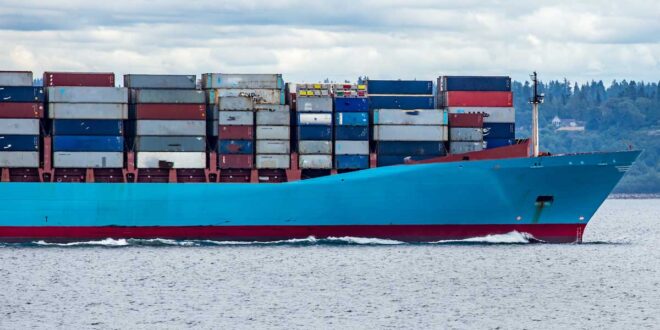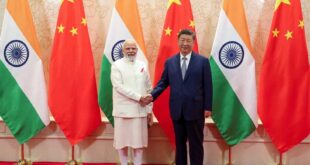Yen Mo
U.S. President Donald Trump’s direct military intervention in the Israel-Iran conflict has complicated the Middle East situation, posing significant risks to both U.S. interests and his personal political future. Meanwhile, Tehran has little room for concessions, as excessive compromise could lead to loss of control over its allies and proxies. If the situation deteriorates further, many countries outside the Middle East will be drawn into this regional conflict.
The key questions are how strong the U.S. reluctance to engage in a prolonged war is and how China will intervene.
Trump portrays himself as a “peace president,” yet he has opted for war. His only way to convince MAGA supporters and the broader anti-war American public is to deny that bombing Iran’s nuclear facilities constitutes “war” and insist the action is a “one-time” strike aimed at swiftly achieving peace and eliminating nuclear threats.
However, Israel’s true goal is “regime change,” which is unattainable without direct U.S. involvement, so it will likely try to drag the U.S. into a broader conflict. Moreover, the U.S. military action lacks direct evidence proving Iran has lost its potential to develop nuclear weapons, making it difficult for the Trump administration to assure the public this will be the last strike.
Additionally, even if Tehran opts to target only Israel and avoid attacking U.S. forces or assets in the Middle East, its allies and proxies may act independently, choosing their own targets.
In other words, it is not enough for the U.S. to exert extreme pressure on Iran, and it may even backfire. Pan-Iranian forces may be divided internally and attack the U.S. and Israel at the same time. Once the situation gets out of control, the U.S. will not be able to maintain its “one-time” promise, and peace in the Middle East will only get farther and farther away, with more and more extraterritorial countries being forced to get involved.
Among these external actors, China may play the most pivotal role, given Beijing’s influence over Tehran and the importance of Iran’s energy supplies to China.
When assessing China’s behavior, it’s unwise to adopt Brzezinski’s “The Grand Chessboard” mindset, assuming China, Iran (and Russia) are “natural allies” resisting U.S. hegemony and will deeply engage in the Iran crisis to counter the U.S. Numerous examples demonstrate this is not China’s approach.
China always avoids head-on conflict with the United States unless its core interests are threatened, and its core interest is Taiwan, not pursuing unipolar hegemony.
Overall, China’s foreign policy prioritizes economic and trade relations. Even as it grows closer to Moscow, China has remained neutral in the Russia-Ukraine conflict, expanding trade cooperation while avoiding military support for Moscow. Although some Western countries believe that China is secretly or indirectly aiding Russia militarily, if Beijing really wanted to help Moscow, the Russian-Ukrainian conflict would have ended a long time ago.
Having refrained from militarily aiding Moscow, China is unlikely to arm Tehran now. Instead, it will view the Iran crisis as an opportunity to strengthen regional economic ties at the trade level.
In the context of the Iran crisis, Beijing’s interest lies in de-escalating tensions, while its opportunity is to enhance China’s influence in the Middle East and Central Asia. Accordingly, three key reports likely sit on Xi Jinping’s desk: one on the Strait of Hormuz, another on the China-Kyrgyzstan-Uzbekistan railway, and a third on a grand economic strategy linking Central Asian countries, Gulf states, and Iran.
Maintaining the Strait of Hormuz’s accessibility is the top diplomatic priority, as over 50% of China’s energy supplies pass through this chokepoint, and both Beijing and Gulf states will focus heavily on it. Additionally, 90% of Iran’s crude oil exports to China travel via this same maritime route.
As a result, urgent diplomatic efforts will inevitably center around the Strait of Hormuz, and Beijing can use this opportunity to push Iran’s Shiite government to resolve historical conflicts with the Sunni Gulf states and maintain access to the Strait, while at the same time demanding that the U.S. military stationed in the Gulf states exercise restraint and limit Iran’s anger to Israel alone.
If the U.S. and Israel both pursue “regime change,” China will provide Iran with more direct support, as a Middle East wholly dominated by U.S. influence would undermine Beijing’s interests—and Moscow’s. In other words, if Trump seeks to topple Iran’s government, it will further incentivize China and Russia to jointly intervene in Middle Eastern disputes.
Thus, the critical question—how strong is the U.S. aversion to a prolonged war?—directly shapes the extent of China’s involvement.
From a long-term energy strategy perspective, China has successfully initiated construction of the China-Kyrgyzstan-Uzbekistan railway, set to open by 2030. This railway is the shortest route in the Belt and Road Initiative (BRI) to the Middle East and Europe. Its short-term destination is Uzbekistan, mid-term is Iran, and long-term is Europe.
The Iran crisis could prompt Beijing to urge Tehran to accelerate BRI’s mid-term goals, expanding energy transport routes between China and Iran, circumventing U.S. sanctions, diversifying trade, and fostering economic cooperation among China, Central Asian states, and Iran.
Iran, a member of the Shanghai Cooperation Organisation, supports the BRI and actively participates in China-led Central Asia summits. However, historical tensions between Gulf states and Iran remain a major obstacle.
In other words, Beijing can leverage the Strait of Hormuz to ease Iran-Gulf state relations, advancing BRI projects like the China-Kyrgyzstan-Uzbekistan railway to serve its long-term goal: a grand economic strategy linking Central Asia, Gulf states, and Iran.
Before the Israel-Iran conflict, Beijing’s strategic vision faced resistance, but a hot war in the Middle East changes the dynamics. War brings destruction but also opportunities for “reshuffling the deck,” and the U.S.’s reckless intervention has inadvertently created a rare strategic opening for China.
Tehran’s government now faces threats on three fronts: the U.S., Israel, and Gulf states, which may welcome the fall of Iran’s theocracy. However, “regime change” implies prolonged chaos, which serves no one’s interests—a key foothold for Beijing.
Thus, Beijing’s primary diplomatic focus will not be Iran but the Gulf states. If Gulf states believe “regime change” will plunge the Middle East into long-term turmoil, China has a chance to soften relations between Sunni states and Tehran.
If this conflict had happened 10 years ago, there would have been little China could have done, but now Beijing has the strength and incentive to change the trajectory of the war. In the U.S., on the other hand, President Trump has set up so many battlegrounds, from domestic to foreign, and is so happy to be in trade friction with so many countries at the same time that it’s impossible to do everything and even possible to achieve nothing, which is a hallmark of a lack of strategy, and no one knows what the Trump administration’s priorities really are.
Israel’s current belligerence makes Middle East peace elusive, but it also cannot sustain a protracted war without U.S. support, and Trump’s patience is notoriously limited. From this perspective, Netanyahu may emerge as the conflict’s biggest loser.
On the surface, China will stay on the sidelines and focus on undermining the legitimacy of U.S. war in the international arena, but at the same time, under the water, Beijing will seize the opportunity to aggressively dismantle the obstacles to “One Belt, One Road” in the Middle East.
 Geostrategic Media Political Commentary, Analysis, Security, Defense
Geostrategic Media Political Commentary, Analysis, Security, Defense





